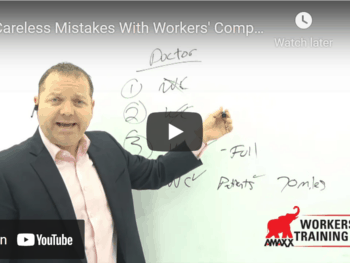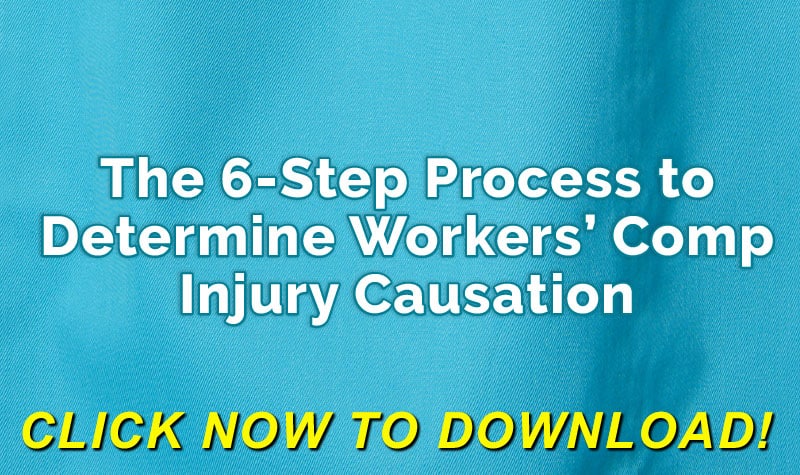
Recent research shows that while permanent total disability claims may comprise just 0.3% of all claims, they account for more than 7% of total claim costs. Or, as the American College of Occupational and Environmental Medicine reported, 5% of 2006 workers’ compensation claims accounted for 80% of the costs. In addition to the financial costs is the enormous impact on the injured worker, his or her family, and colleagues.
The key to optimal outcomes of catastrophic claims is to recognize and intervene in them immediately. Savvy organizations take steps to ensure that if an employee sustains a tragic injury, they have the right processes in place to immediately mitigate the human and financial effects for all concerned.
“Why should you be prepared to respond to a catastrophic loss? Because you could either have a $10 million case, or you could have a $2 million case,” explained Kevin Turner, Chief Clinical Solutions Officer at Paradigm. “You don’t want to create an outlier of an outlier. If you have the right resources at the ready for a catastrophic injury, you can greatly mitigate your exposure and produce the best outcomes for all.”
The nature of catastrophic claims
Spinal cord injuries, amputations, multiple traumas, severe burns, and traumatic brain injuries are prime examples of catastrophic injuries. They require intensive management, typically involving scores of medical providers and lengthy periods of hospitalizations. And they represent the smallest frequency, but the greatest expense in claims.
“The average medical cost to get an injured person to maximum functional recovery hovers around $1.4M, driven primarily by advances in medical technology. That cost was $900,000 just 10 years ago,” Turner said.
There is a prevalence of mental health impacts in catastrophic workers’ compensation cases. “If a parent goes to work in the morning and suffers an acute brain injury or an amputation by the afternoon, you need to assume there is a psychosocial impact to the injured worker, as well as the family, community, and employer,” Turner explained.
The importance of family involvement
Working with and building trust with the injured worker’s family is a must and starts on day one. A person who has been catastrophically injured may be in an ICU or the emergency room, typically in critical condition.
In these cases, the injured worker’s family or other loved ones are likely terrified about the future. Using empathy and active listening can help establish a solid relationship by meeting the needs of the family, especially with respect to their “micro needs.”
“The spouse needs to be called to the hospital; they may have kids at school or that need to be picked up, and there may be a dog that needs to be taken care of,” Turner said. “These micro needs must be taken care of in the beginning to start to build trust.”
Another way to establish trust early in the relationship with the worker and his or her family is to err on the side of caution. Undertaking a thorough claims investigation is critical, as there are OSHA requirements to be met.
“However, if you’re in a position while you are investigating to provisionally accept responsibility for the care management, embrace the family, etc., then do it,” Turner advised. “If you can avoid telling the injured worker or family member that benefits are being held pending further investigation, then that’s the right course to take.”
Care coordination
Getting the right team in place is paramount to a positive outcome. A nurse case manager qualified in catastrophic care management, for example, is essential to providing on-the-ground support and coordination for the injured worker, the family, and the care providers. Research shows they have a significant impact on the effectiveness of treating catastrophic injuries.
Also important is a social worker or clinical psychologist to manage the micro needs and the overall mental wellness of the patient and family. These individuals should be sourcing community support to aid the injured worker. Turner continued, “Treating the whole person and whole family does not always align with allowable expenses in a workers’ compensation claim, so there is a need to find community resources to solve for such barriers to recovery.”
One of the issues that can derail a catastrophic claim is the interactions of the many players involved. This is where communication is critical.
“In the United States, we have excellent medical resources available, but the challenge can be coordinating those resources,” Turner explained. “From looking at our data, we know there is an average of nearly 90 medical hand-offs from the date of injury through maximum medical improvement in a spinal cord injury case. Imagine if each of those hand-offs were delayed by a week or two. I can’t stress enough the importance of properly coordinating this care because of the number of hand-offs. If you don’t pay attention, the pathway to recovery could be greatly extended, not benefiting the injured worker or the payer.”
Finally, but not least in the importance of a catastrophic injury plan, is the partnership with the injured worker and the family. A properly laid out and implemented plan with the right stakeholders involved will empower the employee to be responsible for his or her own recovery.
One way to ensure the injured worker’s engagement is to set expectations for return to work from the onset, even in a catastrophic loss. It prevents the injured worker from developing a disability mindset. These discussions need to be addressed with the injured worker and his or her family.
Conclusion
Executives at companies that have not had a catastrophic injury for a decade, if ever, may think it will never happen. Unfortunately, that mindset and the resulting lack of planning create an enormous risk that is not worth the potential human or financial costs. Having a plan in place to engage companies that specialize in the treatment of catastrophic injuries, even though they are infrequent, is tantamount to the best risk mitigation strategy. Doing so will help ensure workers, their families, and the company itself will be in the best position for an optimal outcome if the unthinkable happens.
 Author Michael Stack, CEO Amaxx LLC. He is an expert in workers’ compensation cost containment systems and helps employers reduce their workers’ comp costs by 20% to 50%. He works as a consultant to large and mid-market clients, is a co-author of Your Ultimate Guide To Mastering Workers Comp Costs, a comprehensive step-by-step manual of cost containment strategies based on hands-on field experience, and is the founder & lead trainer of Amaxx Workers’ Comp Training Center, which offers the Certified Master of Workers’ Compensation national designation.
Author Michael Stack, CEO Amaxx LLC. He is an expert in workers’ compensation cost containment systems and helps employers reduce their workers’ comp costs by 20% to 50%. He works as a consultant to large and mid-market clients, is a co-author of Your Ultimate Guide To Mastering Workers Comp Costs, a comprehensive step-by-step manual of cost containment strategies based on hands-on field experience, and is the founder & lead trainer of Amaxx Workers’ Comp Training Center, which offers the Certified Master of Workers’ Compensation national designation.
Contact: mstack@reduceyourworkerscomp.com.
Workers’ Comp Roundup Blog: http://blog.reduceyourworkerscomp.com/
©2022 Amaxx LLC. All rights reserved under International Copyright Law.
Do not use this information without independent verification. All state laws vary. You should consult with your insurance broker, attorney, or qualified professional.
















